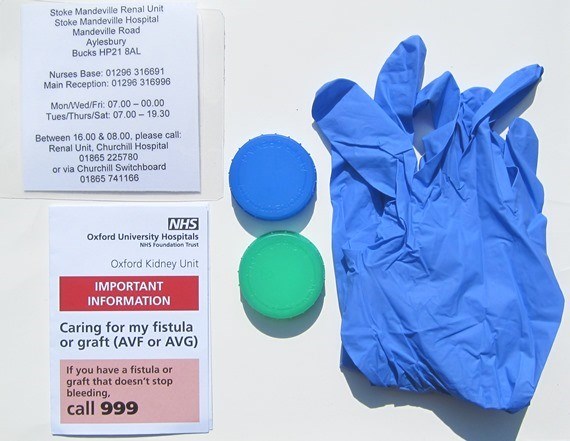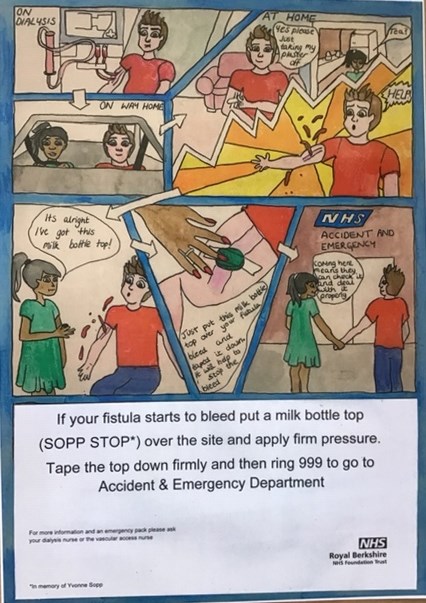Managing a Fistula Bleed
A life threatening bleed from a fistula is very rare but a fistula can bleed for no apparent reason. At the recent inquest into the death of SCKPA member Yvonne Sopp from a fatal bleed, it was reported that nationally during the last three years there have been eleven such bleeds from an AVF/AVG site. Seven of these patients died as a result.
James Gilbert, consultant transplant surgeon in Oxford, and Allie Thornley, matron and clinical lead for renal medicine, have taken action to inform patients by displaying posters in all units and issuing an 'emergency pack' for each patient with a fistula or graft who is under the care of Oxford University Hospitals.
The pack consists of two plastic bottle tops, medical gloves, an information card and useful phone numbers. In the event of a sudden bleed, the bottle top is held securely over the wound while calling the emergency services. A clot forms inside the top, stemming the bleed, while help arrives.
Guidelines for managing a fistula or graft bleed:
- Shout for help immediately. Dial 999 and tell them you are bleeding from a dialysis fistula
- Apply pressure over the bleeding site using a Sopp or bottle top (inside facing your skin) or your thumb. Press exactly over the bleeding point
- Do NOT apply a tourniquet
- If possible ask someone to press on your fistula scar to slow the blood flow.
- Do NOT use a towel or absorbent cloth as this will not stop the bleeding
- Stay calm and lie down. Ask someone to lift your fistula limb higher than your heart
- Go to hospital and see a renal doctor or surgeon, even if the bleeding stops.


